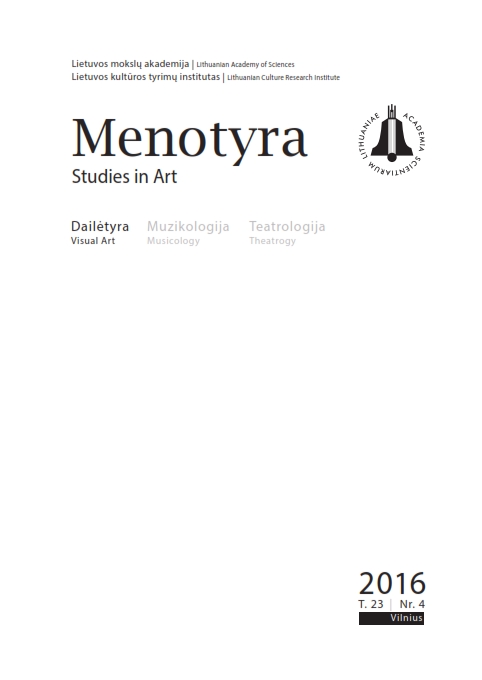Privatus Lietuvos dailės rinkimas sovietmečiu
The private Lithuanian art collecting during the Soviet times
Author(s): Kristina CivinskienėSubject(s): Cultural history, Visual Arts, Sociology of Culture, Post-War period (1950 - 1989), History of Communism, Sociology of Art
Published by: Lietuvos mokslų akademijos leidykla
Keywords: collecting; patronage; authentic; artist’s studio; cultural capital;
Summary/Abstract: Collecting antiques in the Soviet times was considered an illegal activity. Meanwhile, collecting the contemporary Lithuanian art was peripheral and not a very interesting phenomenon for the government and society.Collecting Lithuanian art was a way to escape from the standardized living conditions. The intensified exhibition life in the seventh and eighth decades of the 20th c. became one of the most important impulsions to buy authentic art creations. Exhibitions and reviews formed a symbolic value of works. Taking art works from artists’ studios into collections turned their symbolic value into cultural capital.There were three generations of collectors in the Soviet times. The first one was born be-fore the Second World War. These collectors were intellectuals of artistic and humanitarian professions. Their collections were formed from their like-minded fellow works in the seventh and eighth decades of the 20th c.The middle generation of collectors born after the Second World War started to collect in the eighth and ninth decades of the 20th c. Because of specific conditions of cities, most of collectors concentrated in Vilnius. In Kaunas, collectors mostly collected antiques, meanwhile visual arts were neglected. This generation mainly had technical or economic education and concentrated on collecting the works of the most famous Lithuanian artists. Young artists became a significant part of their collections.The youngest generation started to collect in the end of the ninth decade of the 20th c. Collecting was their hobby to satisfy their aesthetic needs. They had a pleasure to patronage artists.The Soviet collectors bought art works for self-education, cultural needs and aesthetic purposes. Communication with the artists was an important part of the formation of collections.
Journal: Menotyra
- Issue Year: 23/2016
- Issue No: 4
- Page Range: 246-263
- Page Count: 18
- Language: Lithuanian

